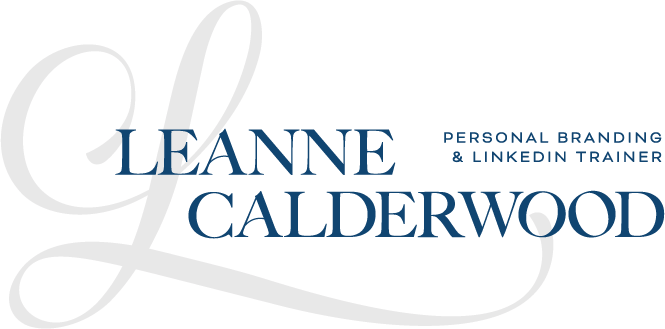In a world where everyone's work is just a click away, standing out isn’t just…

Changing Up Your Personal Brand
Hey there, all you wonderful introverts, cautious optimists, and hesitant brand-builders!
Do you ever find yourself sitting with a warm cup of tea, scrolling through LinkedIn, and thinking, “Yikes! What if I start building a personal brand and then decide I want to change it? What will people think?”
First of all, you’re not alone in this. Many professionals, particularly introverts, worry that once they establish their personal brand, it’s like a tattoo on their forehead that they can’t erase. But here’s the tea (yep, more tea)—evolving your personal brand isn’t a sign of inconsistency. It’s a sign of growth. Let’s dive in.
What is a Personal Brand?
Personal branding is the practice of marketing yourself and your career as a brand. It’s an ongoing process of developing and maintaining a reputation and impression, usually in the digital space. Just like Apple stands for innovation and Starbucks signifies a cozy third place between home and work, your personal brand is a set of perceptions people have about you based on what you put out there.
Why is Personal Branding Important?
Think about it. We’re in an era where everyone Googles everyone else. Whether you’re a freelance designer, a corporate executive, or an aspiring author, your personal brand precedes you. It builds trust with your audience, separates you from the competition, and opens doors to new opportunities. It’s like your virtual handshake before you even meet someone. As introverts, who may not love the limelight but love authentic connections, having a strong personal brand can be a game-changer.
The Pros and Cons of Changing Up Your Brand
There are lots of reasons why changing up your brand is warranted, and a welcome breath of fresh air to both you and your audience!
- Relevance: One of the best reasons to consider rebranding is to stay relevant in an ever-changing market. Industries evolve, trends shift, and consumer preferences are fickle. If your personal brand is stuck in the past, you’re missing out on new opportunities and potentially alienating your audience. By updating your brand, you demonstrate an awareness of market trends, an ability to adapt, and a commitment to staying ahead of the curve.
- Authenticity: As you navigate through your career, you’ll inevitably grow both professionally and personally. What was authentic to you five years ago may not reflect the person you’ve become. Adjusting your personal brand to better align with your current values, skills, and objectives will make your messaging feel more genuine, allowing you to connect more deeply with your audience.
- Fresh Energy: Let’s face it; doing the same thing year in, year out can get stale. A rebrand can act like a shot of adrenaline, not only for you but also for your audience. It shakes things up, gets people talking, and rekindles interest. A new look or updated messaging can bring back lapsed followers and attract new ones.
Changing your brand (especially if you do it too often) doesn’t come without its challenges:
- Confusion: The downside of change is that it can confuse your audience if not executed well. Imagine going to your favorite coffee shop only to find they’ve changed their name, interior, and the entire menu overnight. How would you feel? A little disoriented, right? The same holds true for your personal brand. Any changes need to be clearly communicated and gradually implemented to give your audience time to adjust.
- Time and Resources: Rebranding is not just a matter of slapping on a new logo or updating your LinkedIn headline. It’s a comprehensive process that may involve market research, design overhauls, content updates, and, most importantly, a clear strategy. This requires a significant investment of your time and possibly money if you’re outsourcing any of these elements.
- Risk of Losing Identity: In the process of evolving, it’s possible to go too far and lose sight of the core elements that made your brand appealing in the first place. The key is to evolve without eradicating. Think of it like a home renovation. You want to modernize the kitchen and maybe knock down a wall to open up the living room, but you don’t want to tear down the entire house.
Tips for Changing Your Personal Brand Without Disrupting Your Audience
When you are ready to change up your brand, keep these tips in mind!
- Start with Self-Assessment: Before you make any changes, take some time to evaluate your current personal brand. What’s working? What isn’t? What parts no longer align with who you are? Answering these questions can offer a clearer picture of what needs to be changed and why.
- Do Your Research: Survey your audience and industry. What are current trends? What are people in your niche talking about? Also, keep an eye on those who are successfully evolving their brands. This research can inform your strategy and give you a solid foundation for change.
- Pilot Test Changes: No, you don’t have to change everything at once. Try making smaller tweaks first and gauge audience reaction. For example, you might want to experiment with a new type of content or modify your color scheme slightly. The idea is to dip your toe in the water before taking the full plunge.
- Transparent Communication: Honesty is key when you’re making changes. Let your audience know what you’re up to and why. This isn’t just courteous; it also helps prevent any surprises that might otherwise disorient or alienate your followers.
- Consistency Across Platforms: Your personal brand likely exists across multiple channels—LinkedIn, Twitter, a personal blog, etc. As you start to implement changes, ensure that they’re rolled out consistently across all platforms. The last thing you want is a disjointed brand image.
- Involve Your Audience: One way to mitigate backlash is by involving your community in the change process. You could run polls about potential new logos or ask for feedback on possible new taglines. When people feel involved, they’re less likely to be shocked or put off by the new direction.
- Regularly Update and Reflect: Changing your personal brand isn’t a one-time event but an ongoing process. Once you’ve implemented changes, don’t just set it and forget it. Regularly revisit your brand to make sure it aligns with your goals, values, and the current market landscape.
- Be Prepared for Backlash: Despite your best efforts, some people might not like the new direction. And that’s okay. Prepare for this by having a communication plan in place to address any criticisms constructively.
- Celebrate and Promote: When you’re happy with the changes you’ve made, shout it from the (digital) rooftops! Well, not literally, but do make sure you mark the occasion. Share a blog post detailing the process and outcomes, or post a celebratory video. This will help your audience transition with you and celebrate the brand’s evolution.
Challenges You May Have to Overcome
Changing up your brand can be a ton of fun, but it doesn’t come without its setbacks:
- Resistance to Change: Whether it’s internal resistance or pushback from your audience, any change can be met with a level of skepticism or reluctance. It’s natural for people to prefer the comfort of the familiar. Prepare yourself mentally for this resistance and have a solid rationale for why the change is necessary.
- Time Investment: Changing a personal brand isn’t an overnight process; it takes time to research, plan, and implement these changes. This is especially challenging for busy professionals who are already stretched thin. Make sure to carve out dedicated time to focus on your brand evolution.
- Financial Costs: Depending on the extent of the change, there might be some financial investment required. This could include costs for new designs, marketing collateral, or even consultation fees if you’re seeking expert advice. Budget accordingly so you’re not caught off guard.
- Message Misalignment: As you update your personal brand, there’s a risk that your new message may not resonate as well as the old one. If not executed carefully, you could end up confusing your audience, diluting your impact or even losing followers.
- Loss of SEO and Online Traction: If your brand change includes a new website or a change in the type of content you’re producing, you might see a dip in your SEO rankings initially. Be prepared for this and have a strategy to build your online presence back up.
- Nostalgia Factor: Sometimes, people have a sentimental attachment to old branding elements — maybe your old logo was particularly eye-catching or your tagline was catchy. You’ll need to manage this nostalgia carefully to ensure that your audience remains engaged during the transition.
- Overwhelming Choices: With the ability to change comes the paradox of choice. With so many directions you could take your brand, it may become overwhelming. Having a clear strategy can help mitigate this.
- Potential Loss of Existing Audience: The harsh reality is that not everyone will be on board with the new direction you choose. While you may attract a new audience more aligned with your brand’s evolution, there’s also the potential risk of losing some of your existing followers.
- Maintaining Authenticity: One of the toughest challenges is evolving your brand while remaining authentic. Your audience has followed you for a reason, and while change is inevitable, you don’t want to alienate the community that finds value in your original message and persona.
- Managing Multi-Platform Transition: If your brand is spread across multiple online platforms, managing a cohesive transition on all of them can be a logistical challenge. Each platform has its own set of guidelines and user expectations that you’ll need to consider.
These tips aim to help you navigate the tricky waters of personal brand evolution. Remember, you’re not chiseling your brand into stone; think of it more like clay. It can and should be molded as you grow and change.
Your personal brand is not a prison; it’s a playground. One of the most liberating things about the digital age is the room it provides for growth, change, and evolution.
Are you ready to give your brand the room to grow that it deserves? If the answer is a resounding “Yes!” then I invite you to check out my course, Brand Plan Academy, where we simplify the complexities of personal branding into manageable, repeatable frameworks that even the most introverted among us can get excited about.
RELATED – Not just for celebrities; Personal Branding is for Everyone.
RELATED – 8 Areas Of Focus When Designing Your Personal Brand
RELATED – 5 Myths About Personal Branding
RELATED – Personal Branding and Its Importance for B2B Professionals



